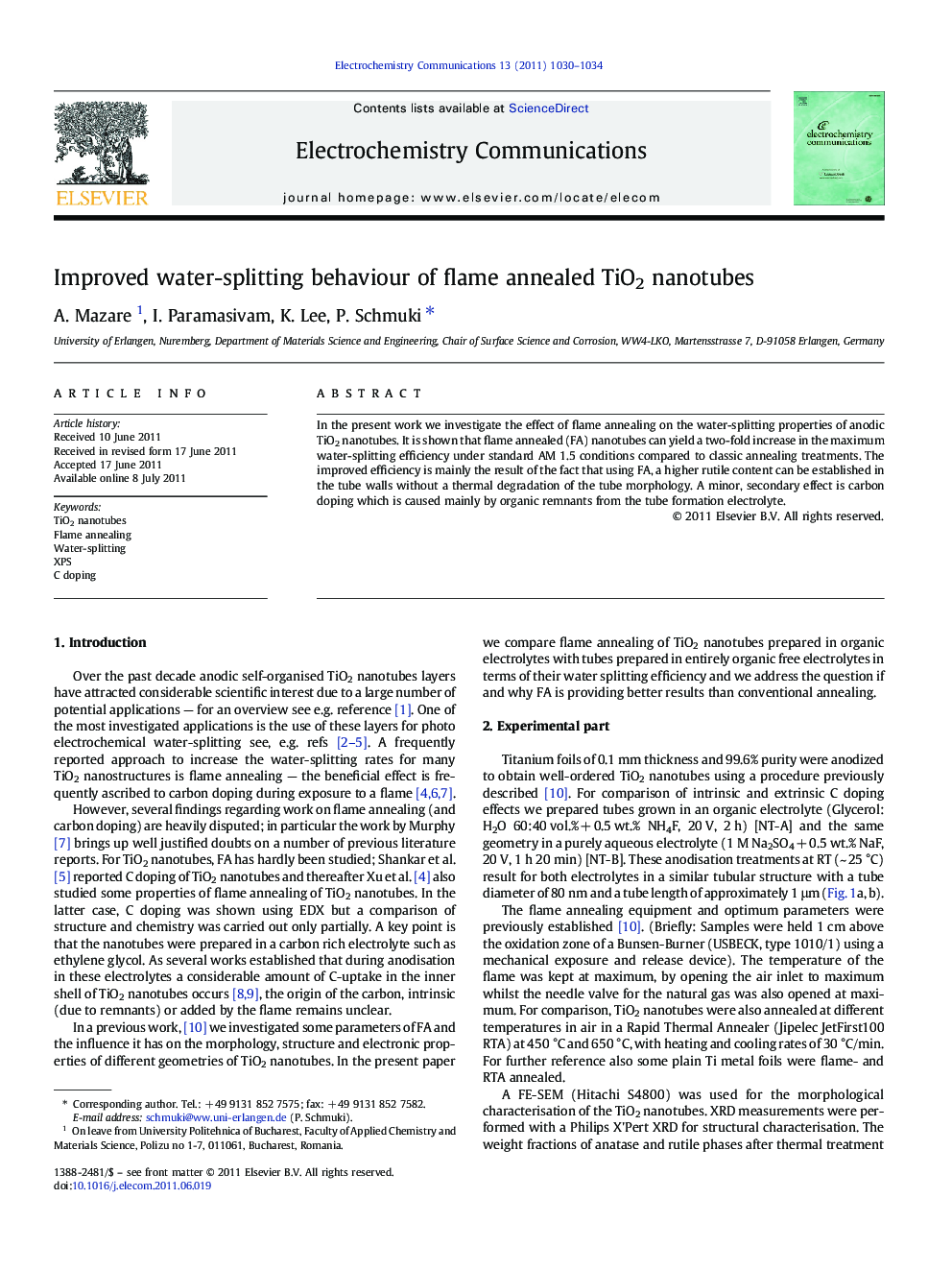| Article ID | Journal | Published Year | Pages | File Type |
|---|---|---|---|---|
| 180342 | Electrochemistry Communications | 2011 | 5 Pages |
In the present work we investigate the effect of flame annealing on the water-splitting properties of anodic TiO2 nanotubes. It is shown that flame annealed (FA) nanotubes can yield a two-fold increase in the maximum water-splitting efficiency under standard AM 1.5 conditions compared to classic annealing treatments. The improved efficiency is mainly the result of the fact that using FA, a higher rutile content can be established in the tube walls without a thermal degradation of the tube morphology. A minor, secondary effect is carbon doping which is caused mainly by organic remnants from the tube formation electrolyte.
► Flame annealed nanotubes can yield an increase in the visible water-splitting efficiency compared with classic annealing. ► The higher efficiency is mainly due to a higher rutile/anatase ratio – shifting the band gap in the visible range. ► Flame annealing allows for a high rutile content content without a thermal degradation of the tube morphology. ► A minor, secondary effect is carbon doping which is caused mainly by organic remnants from the tube formation electrolyte.
